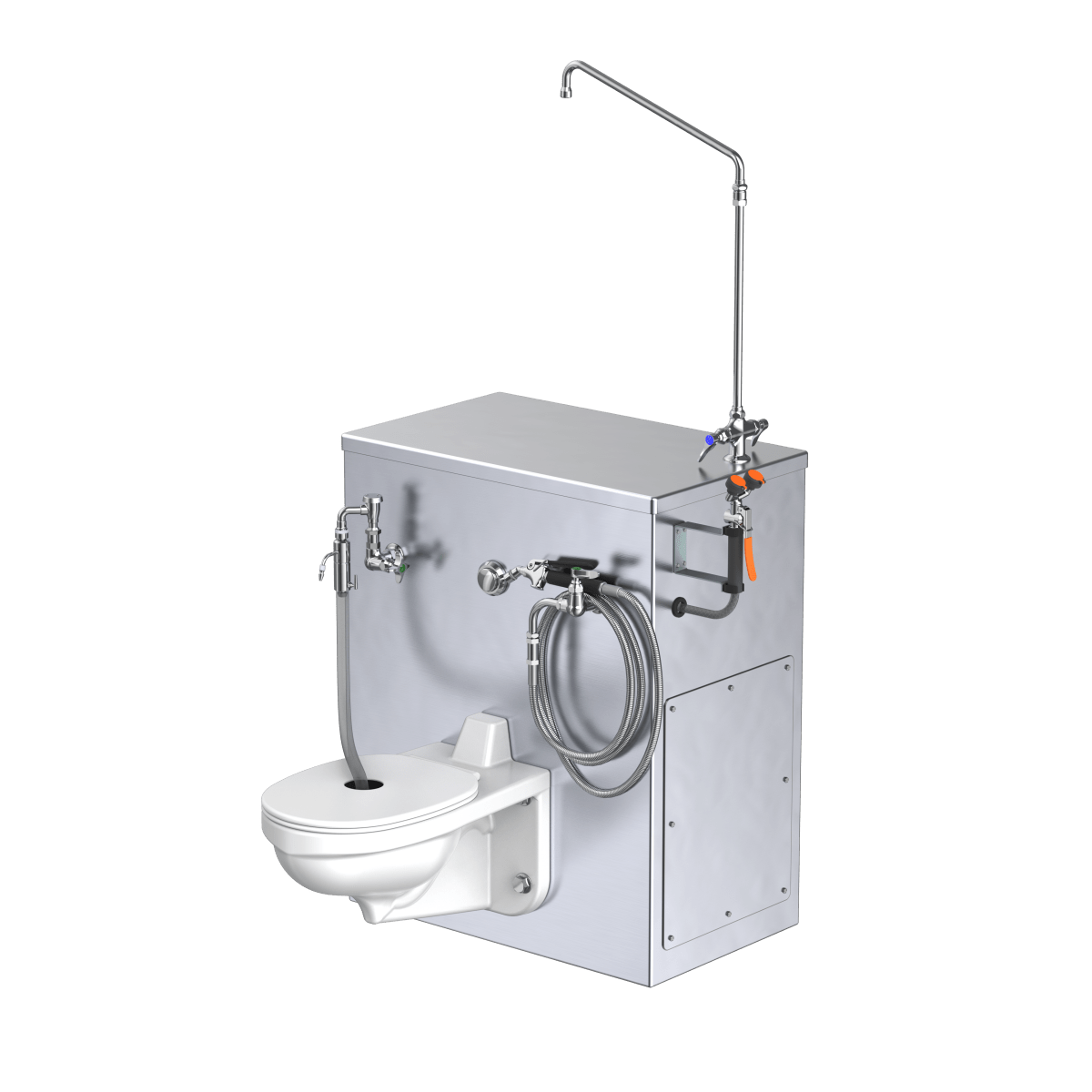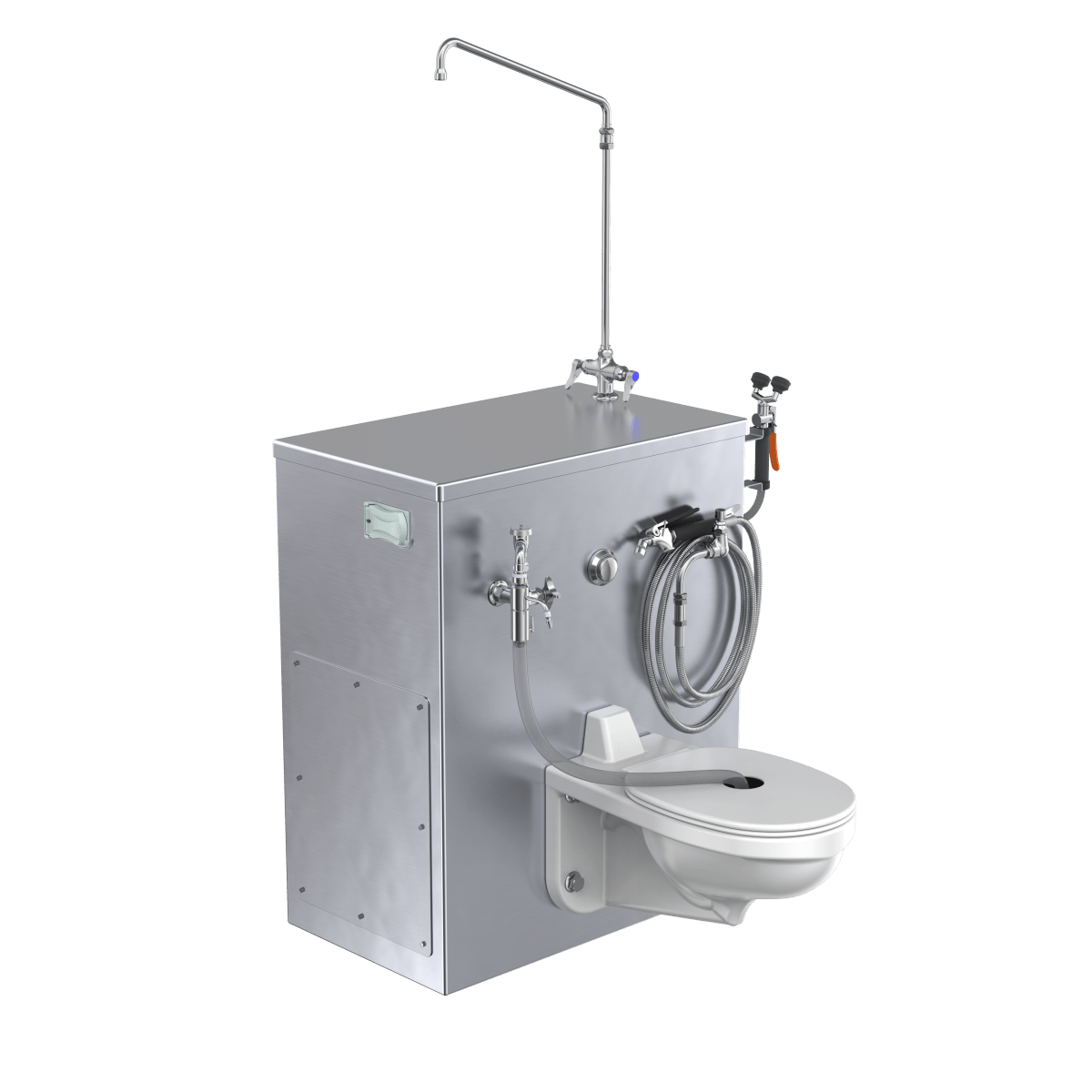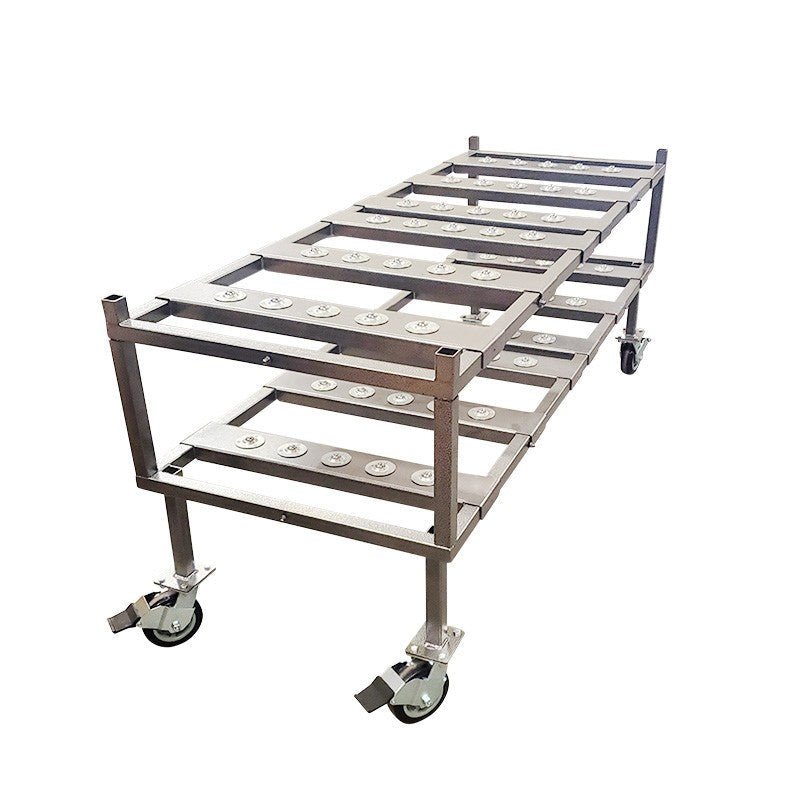Why Human Composting is Revolutionizing End-of-Life Care
Can human bodies be composted? Yes, human bodies can be composted through a process called natural organic reduction (NOR) or terramation, which is now legal in 12 U.S. states and growing rapidly.
Quick Answer:
- Legal Status: Currently legal in 12 states including Washington, Colorado, Oregon, Vermont, California, New York, Nevada, Arizona, Maryland, Delaware, Minnesota, and Maine
- Process: Takes 8-12 weeks using wood chips, alfalfa, and straw in controlled vessels at 131-160°F
- Output: Produces approximately 1 cubic yard (500-1,000 pounds) of nutrient-rich soil per body
- Cost: Ranges from $2,500-$7,000, typically less than traditional burial
- Environmental Impact: Uses 87% less energy than cremation and prevents 1 metric ton of CO₂ emissions
When Dennis Cunningham was diagnosed with terminal cancer, he wanted his death to reflect his values, instructing his children to have his body composted to nourish new life. This captures the growing movement toward human composting as families seek meaningful, environmentally responsible alternatives.
The process mimics nature's decomposition cycle found on forest floors. Human remains are placed in vessels with organic materials like wood chips, alfalfa, and straw. Beneficial microbes create heat that reaches 131-160°F, eliminating pathogens while changing the body into approximately one cubic yard of fertile soil over 8-12 weeks.
This addresses multiple concerns facing the funeral industry. Traditional burials consume valuable land and use over 800,000 gallons of toxic embalming chemicals annually in the U.S. Cremation requires temperatures of 1,400-1,600°F and emits significant carbon dioxide. Human composting offers a third option that sequesters carbon, uses minimal energy, and creates beneficial soil.
As Mortuary Cooler, I've worked with funeral home directors nationwide who are increasingly interested in sustainable death-care options. Can human bodies be composted represents not just an environmental solution, but a fundamental shift in how we honor the deceased while supporting the living earth.
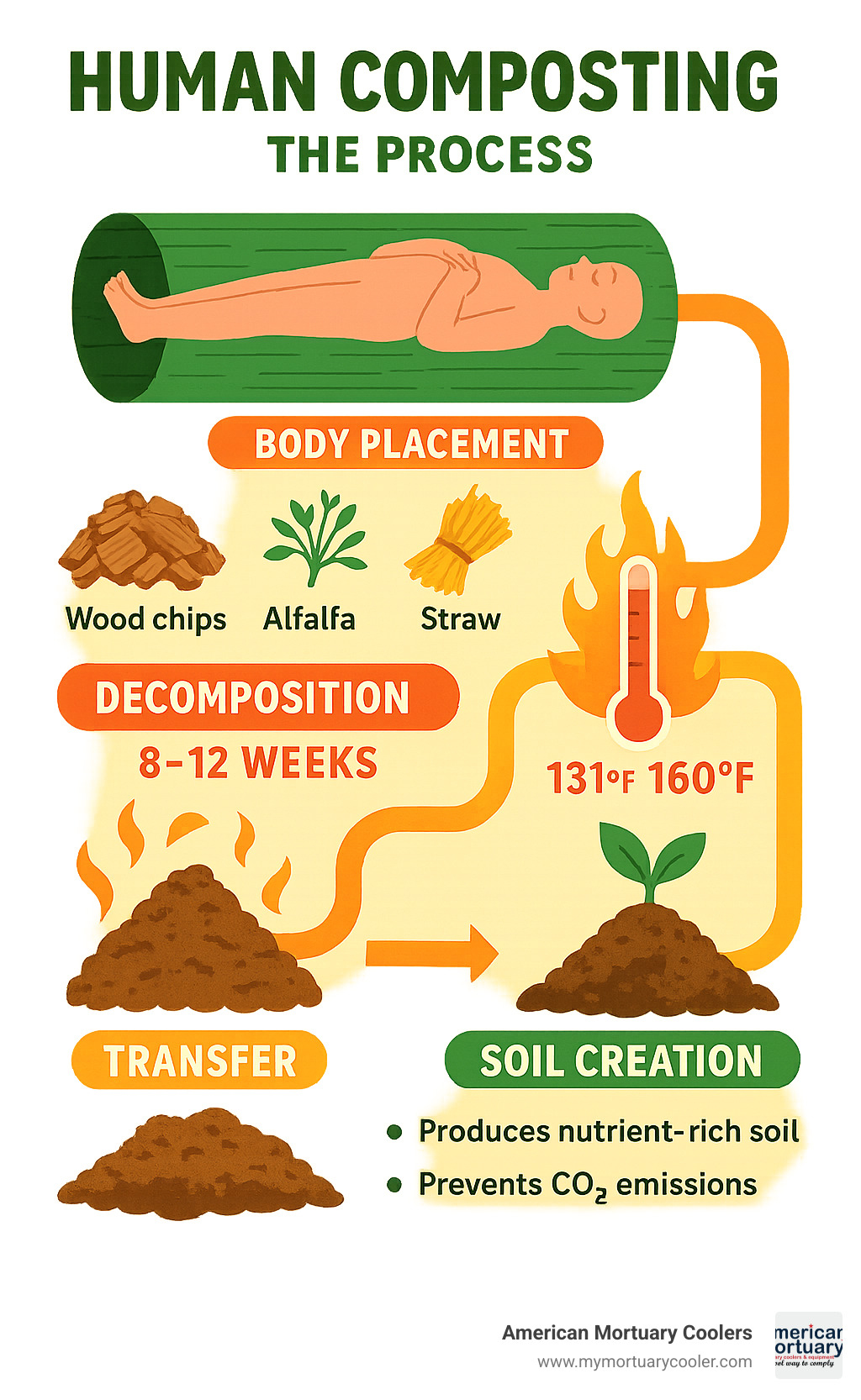
Can human bodies be composted basics:
Can Human Bodies Be Composted? Key Facts
Can human bodies be composted? Absolutely. Human composting, scientifically known as natural organic reduction (NOR) or terramation, transforms human remains into nutrient-rich soil through a carefully controlled process.
Picture walking through an old-growth forest. Beneath your feet lies rich, dark earth created by fallen trees and organic matter that have naturally decomposed over countless seasons. This forest floor process has operated for millions of years, with microorganisms breaking down organic material into fertile humus. Human composting recreates this ancient cycle in a controlled environment.
The decomposition science relies on aerobic breakdown. When organic matter combines with the right materials, beneficial microbes multiply rapidly and generate heat. These thermophilic microbes work to break down tissues while creating temperatures between 131°F and 160°F.
This heat serves a critical pathogens kill-step function. At these temperatures, harmful bacteria like E. coli and Salmonella are eliminated, making the process completely safe. It's nature's sterilization system, refined for human application.
The process requires specific materials: wood chips provide carbon and air pockets, alfalfa adds nitrogen and beneficial microbes, and straw contributes carbon while maintaining proper moisture levels.
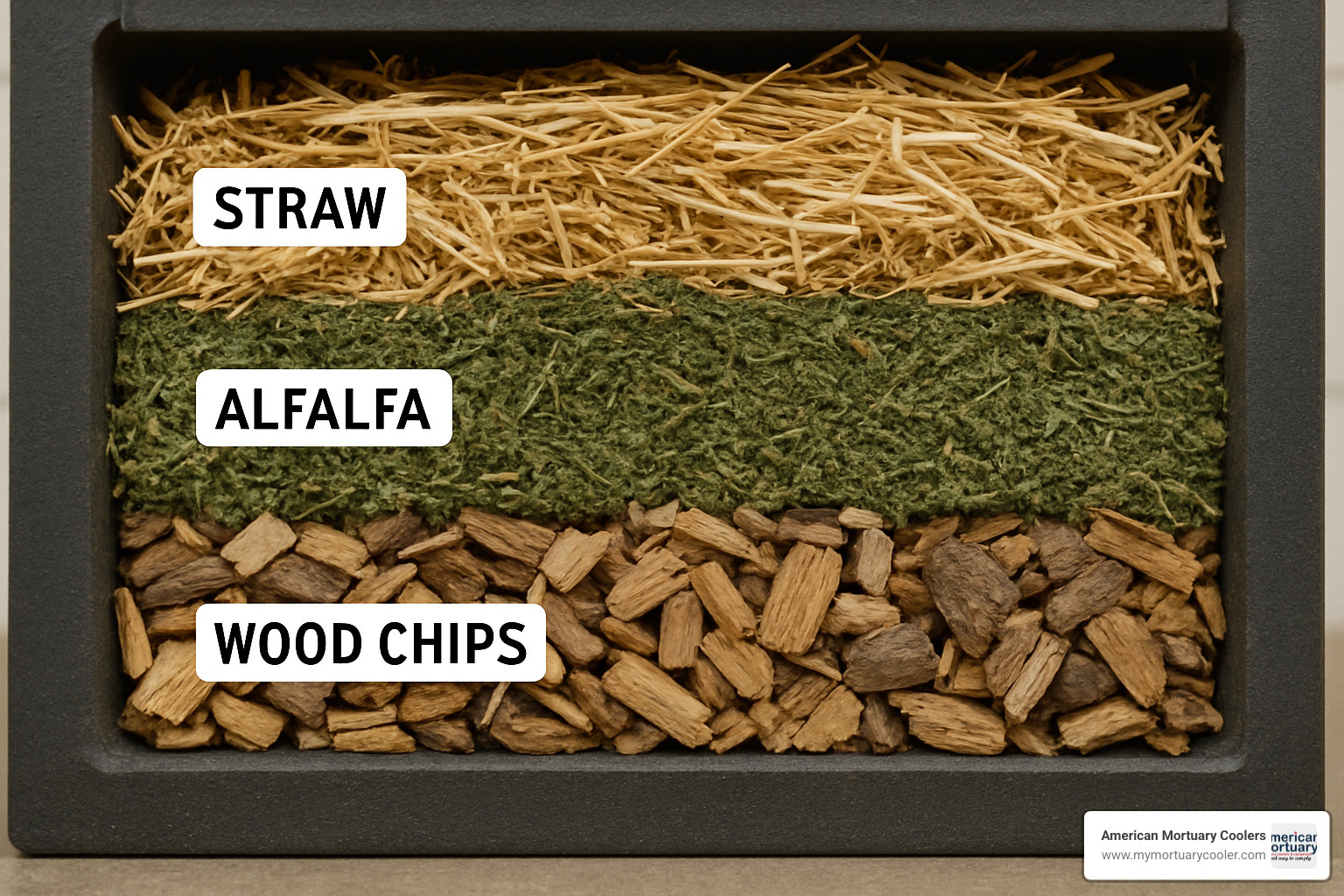
"Can human bodies be composted" in history
The roots stretch back to livestock mortality composting used by farmers for decades to safely dispose of deceased animals while preventing disease spread. This agricultural practice proved controlled composting could handle large organic matter safely.
In 2013, architect Katrina Spade wrote a groundbreaking architecture thesis at the University of Massachusetts Amherst titled "Of Dust and Decomposition." Her research explored how human composting could solve problems like urban cemetery overcrowding while providing environmental benefits.
Washington State became the pioneer, passing the first WA law (SB 5001) in 2019, taking effect in May 2020. This established the regulatory framework that other states have since adopted.
"Can human bodies be composted" today
Today, human composting is legal in 12 legalized states, representing about 24% of the U.S. population. States include Washington (2020), Colorado (2021), Oregon (2022), Vermont (2022), California (effective 2027), New York (pending regulations), Nevada, Arizona, Maryland, Delaware, Minnesota (effective July 2025), and Maine.
This rapid legalization trend continues as more families seek environmentally conscious death-care options. Global interest extends beyond U.S. borders, with Sweden legalizing human composting and other countries exploring similar legislation. About 60% of Americans now express interest in green funeral options.
Step-by-Step Process & Materials
The journey of can human bodies be composted unfolds through five carefully orchestrated phases. The process begins with preparation - no embalming chemicals can be used as they would contaminate the resulting soil. The deceased is wrapped in natural fiber shrouds or placed in simple wooden caskets without metal hardware.
The laying-in ceremony marks the start of change. The body is placed in a specialized vessel alongside organic materials: wood chips provide carbon and air pockets, alfalfa brings nitrogen and beneficial microbes, and straw adds carbon while maintaining proper moisture levels. This achieves the optimal 25-30 parts carbon to 1 part nitrogen ratio.
The vessel is a stainless steel cylinder, typically 8 feet long by 4 feet tall. Beneficial microbes generate heat reaching 131-160°F for 5-7 weeks, with periodic rotation for proper aeration. Temperature, moisture, and oxygen levels are monitored constantly.
Next comes the curing phase lasting 3-5 weeks. The composted material moves to resting bins where bone fragments are removed and ground into fine powder, then mixed back into the soil. Medical implants are removed and recycled appropriately.
The final result produces approximately one cubic yard of nutrient-rich soil weighing 500-1,000 pounds with a balanced pH between 6.5-7. The entire journey takes 8-12 weeks.
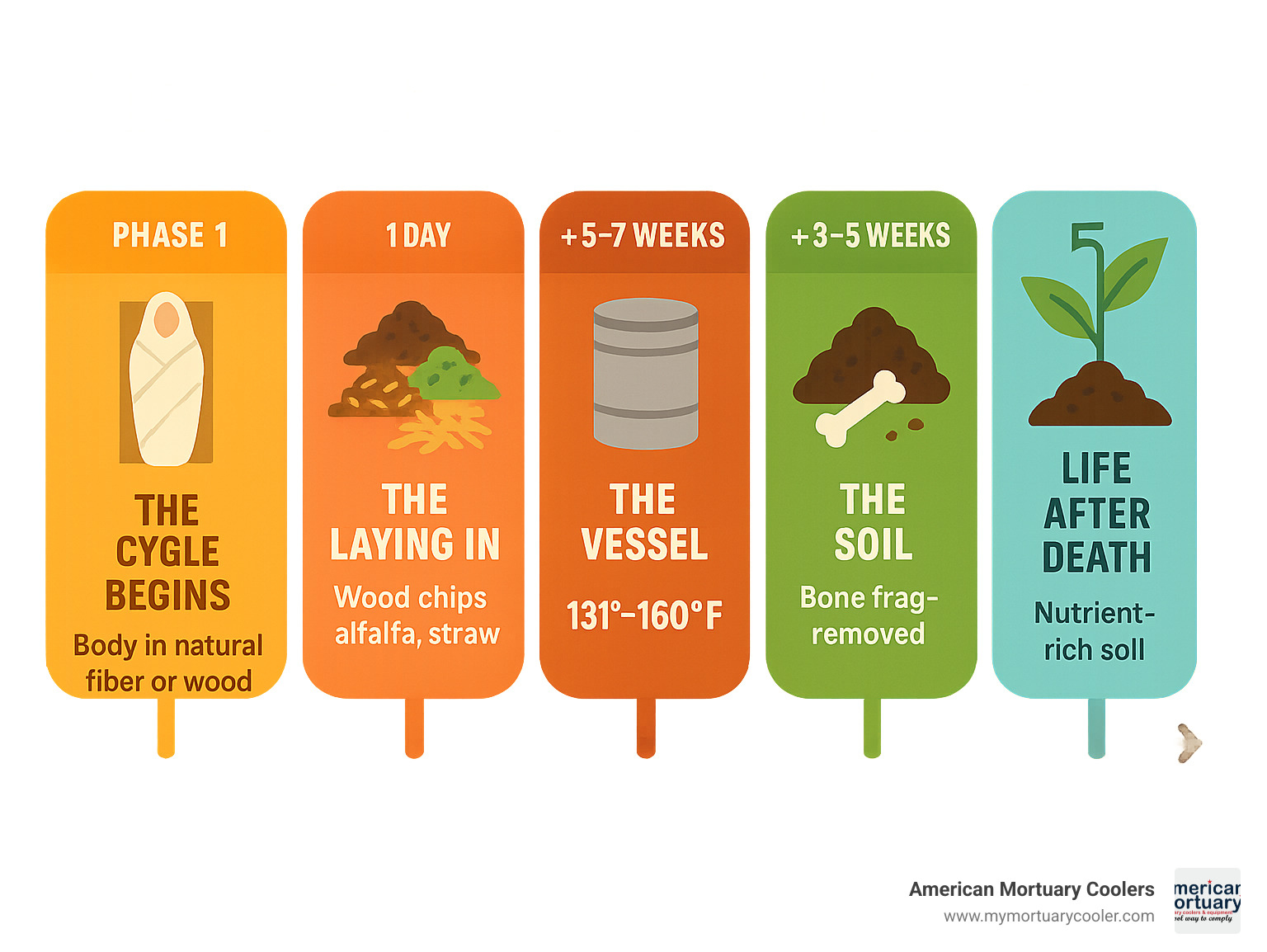
For detailed information, check out this in-depth guide to human body composting.
Safety & Quality Controls
Safety protocols ensure the resulting soil is safer than most garden compost. Temperature monitoring maintains 131°F+ for at least three consecutive days, destroying harmful pathogens including bacteria, viruses, and parasites.
Laboratory testing screens for pathogens, heavy metals, and chemical contaminants. Tests check for E. coli, Salmonella, and other bacterial indicators. pH testing confirms optimal range of 6.5-7.
The curing phase provides additional safety buffer, allowing complete decomposition while stabilizing the soil. Scientific research on soil safety confirms properly managed human composting produces soil meeting or exceeding safety standards.
Legal, Ethical & Religious Landscape
The question "can human bodies be composted" has sparked debates in state legislatures and religious communities nationwide. Washington State broke ground with Senate Bill 5001 in 2019, taking effect May 2020. Colorado followed in 2021, then Oregon and Vermont in 2022.
California passed Assembly Bill 351 but won't allow human composting until 2027. New York legalized the practice but is developing regulations. Nevada, Arizona, Maryland, Delaware, Minnesota (starting July 2025), and Maine have joined the movement.
This rapid expansion shows growing acceptance, though opposition remains strong in many areas, particularly from religious groups.
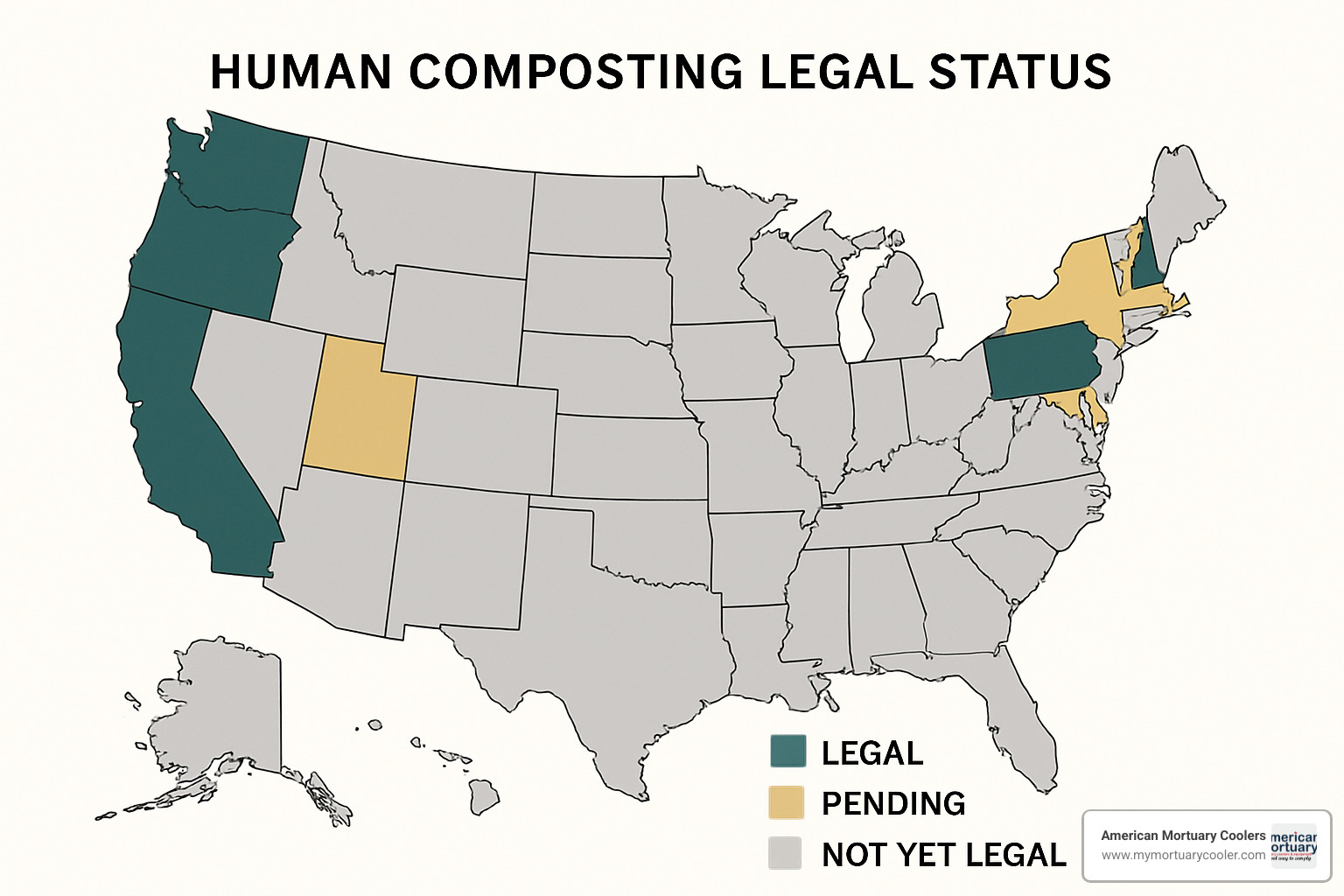
The Catholic Church has emerged as the strongest opponent. The U.S. Conference of Catholic Bishops argues composting violates human dignity and conflicts with beliefs about bodily resurrection, citing the Vatican's 2016 document "Ad resurgendum cum Christo."
Some Jewish communities have adapted their rituals to include composting, with rabbis offering blessings. Protestant denominations show mixed reactions - some accept the environmental stewardship aspect while others prefer traditional practices.
The ethical debate centers on whether human composting honors or diminishes human dignity. Supporters argue returning nutrients to nourish new life celebrates natural cycles. Critics worry industrial processing reduces human remains to commodities.
Regulations & Family Rights
State regulations share common requirements: licensing for facilities and operators, strict construction standards, detailed records, and regular inspections. Families retain transport rights across states with proper permits - about 29% of bodies at Seattle's Recompose facility come from out-of-state.
Families keep full rights over resulting soil, similar to cremated remains. Soil can be scattered on private property with landowner permission, used in memorial gardens, or donated to conservation organizations. Some states restrict use on food-production farmland.
Conservation land donations have become popular, with facilities partnering with land trusts for habitat restoration. Body Composting Colorado 101: Legal Options Explained provides detailed legal navigation information.
Environmental & Financial Comparison
When families ask "can human bodies be composted" environmentally, the numbers are compelling. Human composting uses 87% less energy than cremation while preventing approximately one metric ton of carbon dioxide per person - equivalent to keeping emissions from a 2,481-mile road trip out of the atmosphere.
Cremation burns at 1,400-1,600°F for hours, releasing about 150 kg of CO₂ per body plus mercury from dental fillings. Conventional burial pours over 800,000 gallons of toxic embalming chemicals into the ground annually in the U.S., while casket production consumes 4 million acres of forest yearly.
Financially, human composting costs $2,500-$7,000, compared to traditional burial averaging $10,000+ (including $5,000 caskets and $5,000-$10,000 burial plots). Cremation with services averages $7,000, making human composting competitively priced with superior environmental benefits.
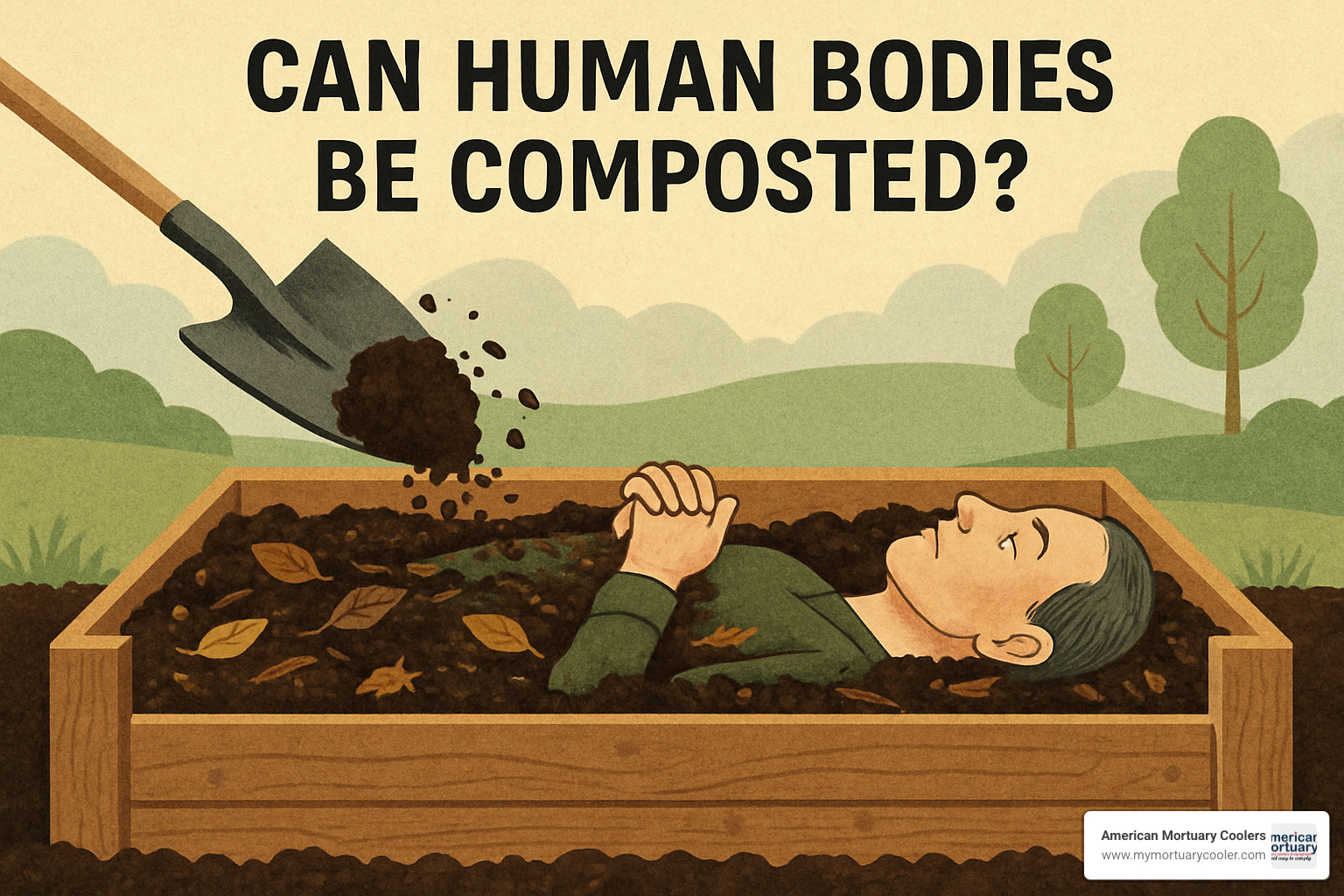
Soil Benefits & Uses
Each body produces one cubic yard of nutrient-rich soil with balanced nitrogen, phosphorus, and potassium. Research shows increasing soil organic matter by 1% helps retain an additional 20,000 gallons of water per acre, making human-derived compost valuable for reforestation and habitat restoration.
Popular applications include memorial gardens, conservation projects, habitat restoration, memorial tree plantings, erosion control, reforestation initiatives, and wetland restoration. Most states don't allow use on agricultural food-production land, and public land use requires specific permissions.
More info about x services provides additional details about soil applications and state-specific restrictions.
Family Experience & Personalization Options
When families ask "can human bodies be composted" meaningfully, they find rich personalization opportunities. The journey often begins with "laying-in" ceremonies - beautiful rituals combining traditional funeral reverence with natural elements.
Families bring flowers from loved ones' gardens, play favorite songs, or display meaningful artwork. Composting vessels become canvases for expression - decorated with children's drawings, family photos, or items telling life stories like a teacher's apple or musician's sheet music.
Many facilities welcome family visits during composting, providing transparency and comfort. When soil is ready, families create lasting memorials. Some build backyard altars, others plant memorial trees that grow for generations. The soil can be divided among family members for individual memorial spaces.
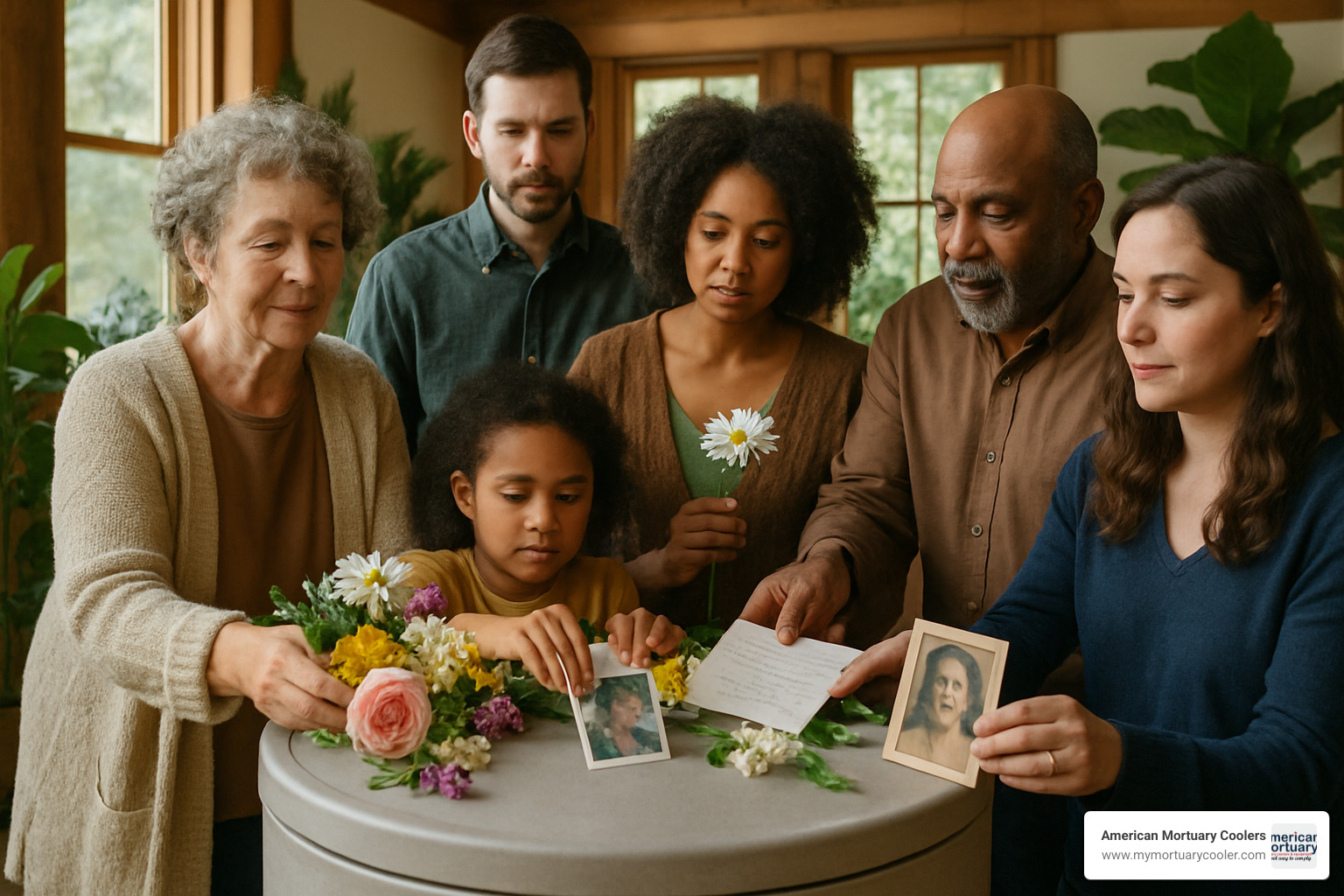
Families hold elaborate scattering ceremonies or prefer quiet, private moments in meaningful locations. The flexibility allows scattering in special places (with permission), donating to conservation projects, or keeping portions in memorial containers.
How to Compost a Body: 3 Methods That Guarantee Results offers detailed guidance on personalizing the experience.
Future Outlook & Innovations
The future looks promising with more states introducing legislation annually and shifting public opinion toward environmental death-care options. Technological advances are optimizing microbial activity to potentially reduce the 8-12 week timeline while maintaining safety standards.
Mobile composting units could bring services to rural areas without permanent facilities. Federal guidelines may standardize practices across states, making transport easier and ensuring consistent quality.
Facilities are partnering with reforestation organizations and climate change mitigation efforts, meaning choosing human composting actively contributes to healing damaged ecosystems. Advanced monitoring systems could make the process more efficient while maintaining high safety standards.
Frequently Asked Questions about Human Body Composting
How long does the process take?
When families ask "can human bodies be composted" and timing, the answer is 8-12 weeks total. The process unfolds in two phases: 5-7 weeks in the composting vessel at 131-160°F while beneficial microbes work, followed by 3-5 weeks curing where pH stabilizes between 6.5-7. This timeline is remarkably efficient compared to natural ground decomposition taking years or decades.
What happens to medical implants?
Electronic devices like pacemakers are removed before composting begins for safety reasons. Metal implants like artificial joints and surgical hardware are extracted after soft tissue decomposition and sent to recycling facilities. Dental work including mercury fillings and gold crowns are carefully removed during bone processing and handled according to environmental regulations. The process ensures nothing harmful enters final soil while maximizing recycling potential.
Where can the soil be used?
Private property use offers the most flexibility with landowner permission. Families commonly plant memorial trees or create memorial gardens. Conservation projects welcome donations for habitat restoration and reforestation through facility partnerships with land trusts.
Important restrictions include prohibition on agricultural food-production land in most states. Public land use requires specific agency permissions. The soil can be divided among family members for individual memorials, scattered in meaningful locations, or kept in memorial containers alongside traditional keepsakes.
Conclusion
The question "can human bodies be composted" has transformed from curious possibility into practical reality across 12 states and counting, offering families meaningful ways to honor loved ones while nurturing the earth.
This isn't just about finding greener alternatives - though preventing one metric ton of CO₂ emissions per person while using 87% less energy than cremation represents significant progress toward sustainable death care. The real magic happens in that cubic yard of rich, life-giving soil emerging from the process.
I've worked with funeral directors across Tennessee, Atlanta, Chicago, and beyond through American Mortuary Coolers, witnessing how families increasingly seek death-care options reflecting their values. While our expertise lies in crafting custom mortuary equipment rather than composting vessels, we understand the deeper need driving this change: desire for authentic, environmentally responsible death practices.
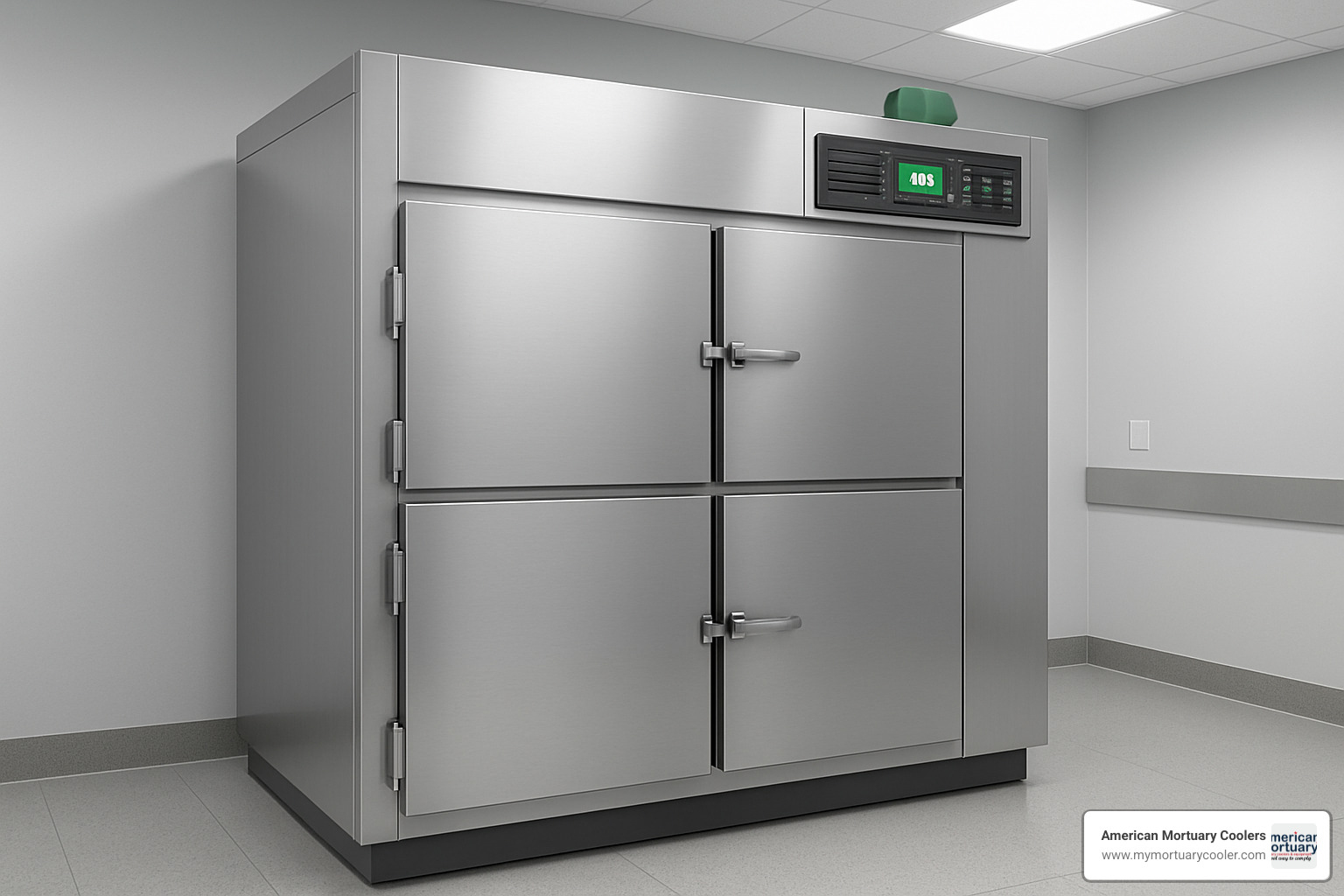
Families choosing human composting make statements about how they want to be remembered - becoming part of memorial forests, nourishing conservation lands, literally giving life after death. It's a beautiful concept resonating with our deepest understanding of natural cycles.
The future of death care is expanding beyond traditional options. As more states legalize human composting and public acceptance grows, we'll likely see continued innovation in sustainable death practices.
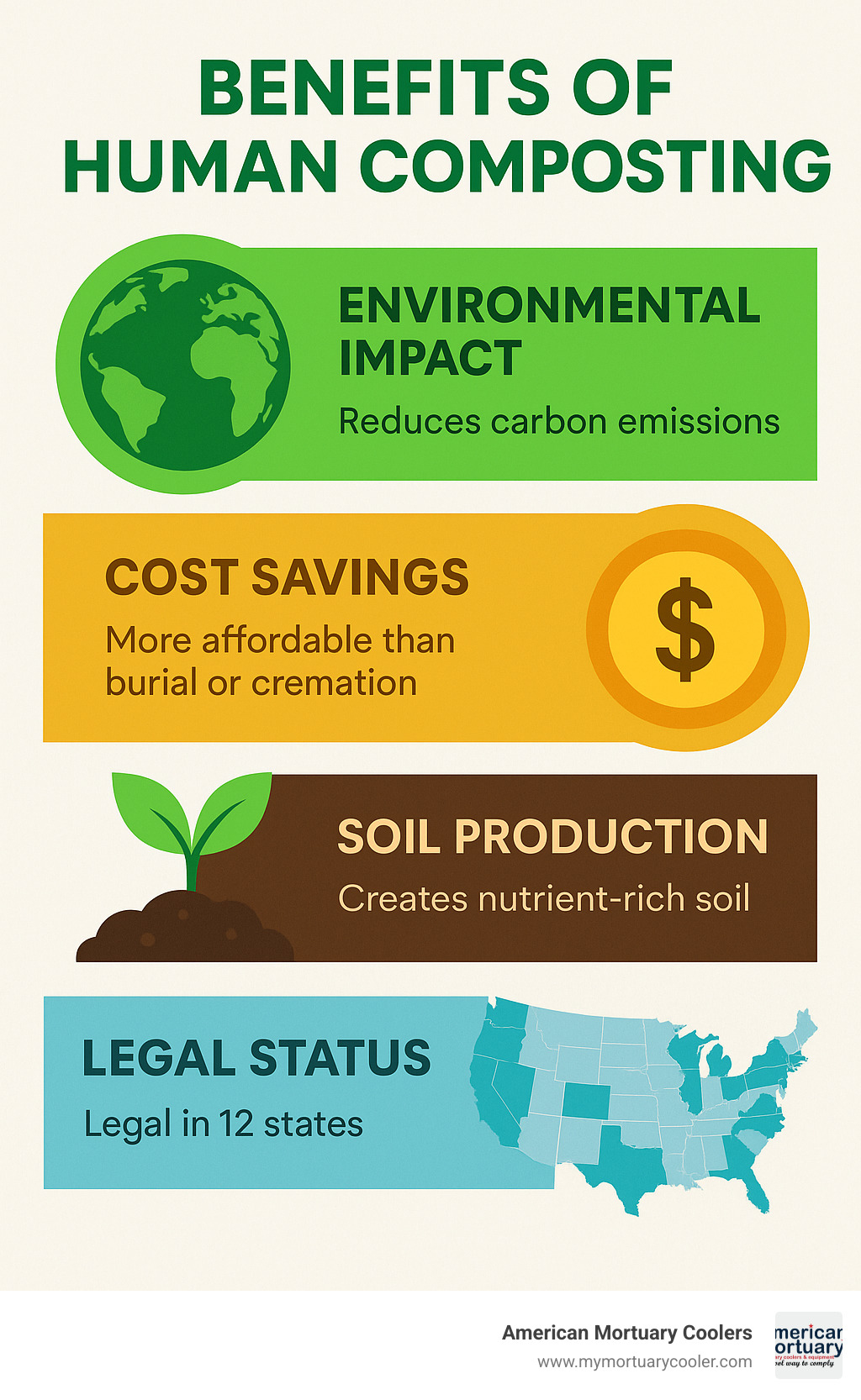
Whether you're a funeral professional exploring new services or a family planning ahead, human composting proves can human bodies be composted isn't just possible - it's becoming preferred for environmentally conscious families wanting their final act to be giving rather than taking.
The process offers something unique: changing grief into growth, death into new life, and individual loss into collective environmental benefit. In a world facing climate challenges, human composting provides hope that even in death, we can contribute to healing our planet.
For detailed information about sustainable death-care practices, explore our In-Depth Guide to Human Body Composting. The future of death care is growing greener, and families are leading the way.








